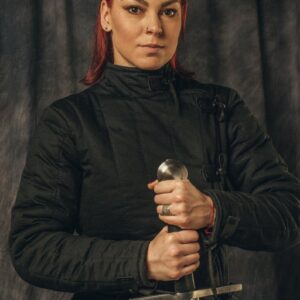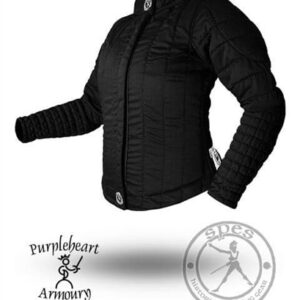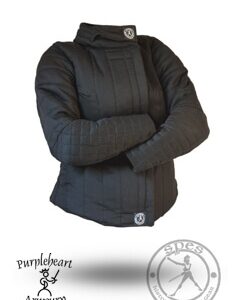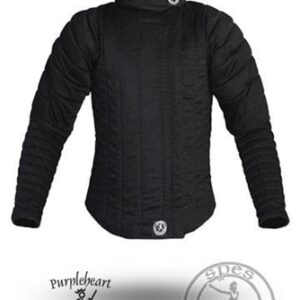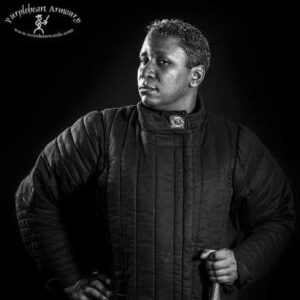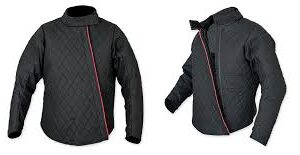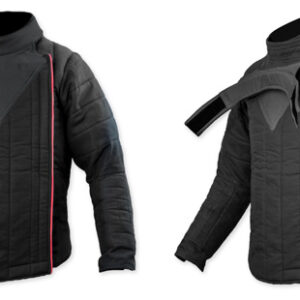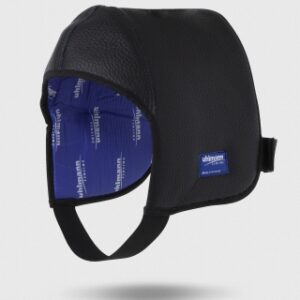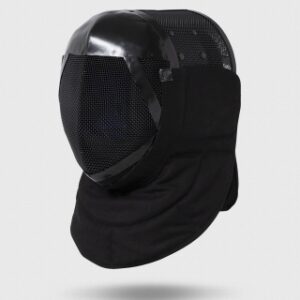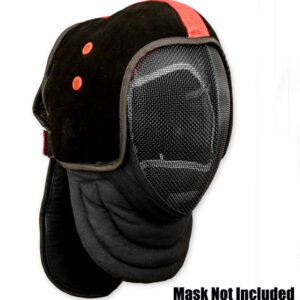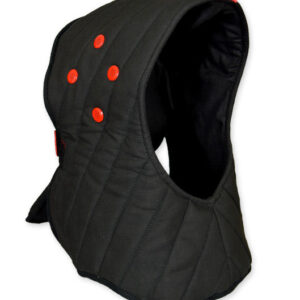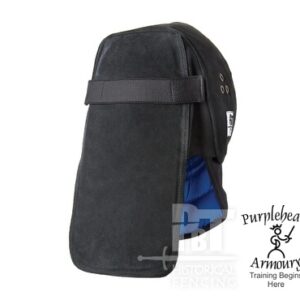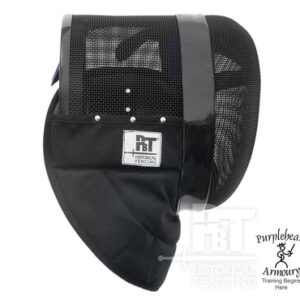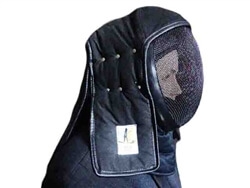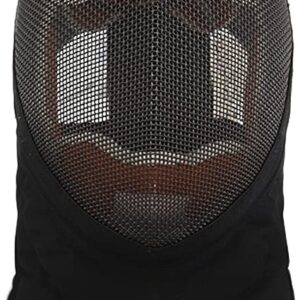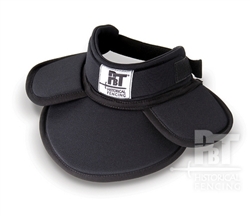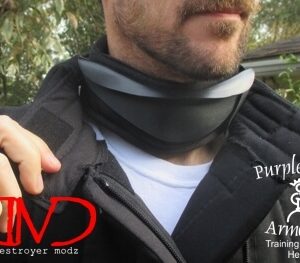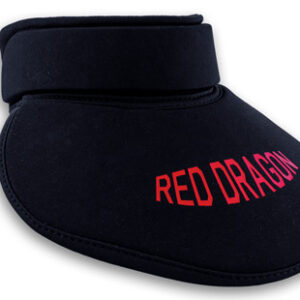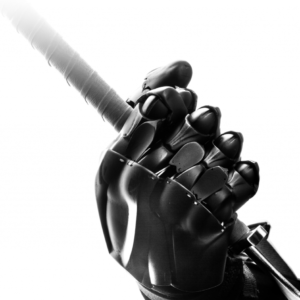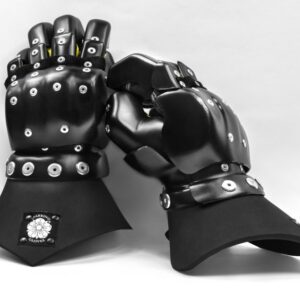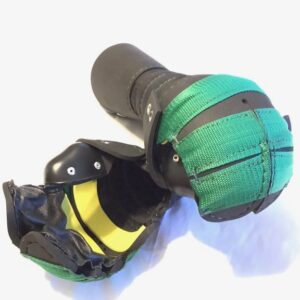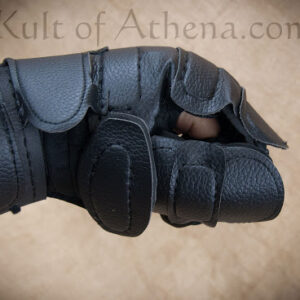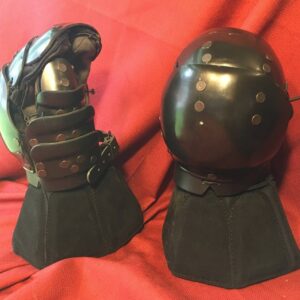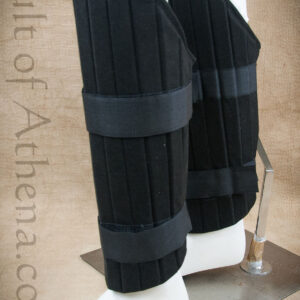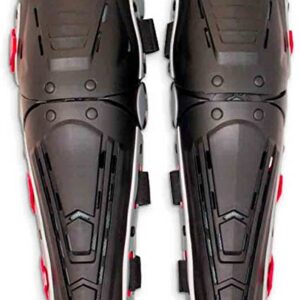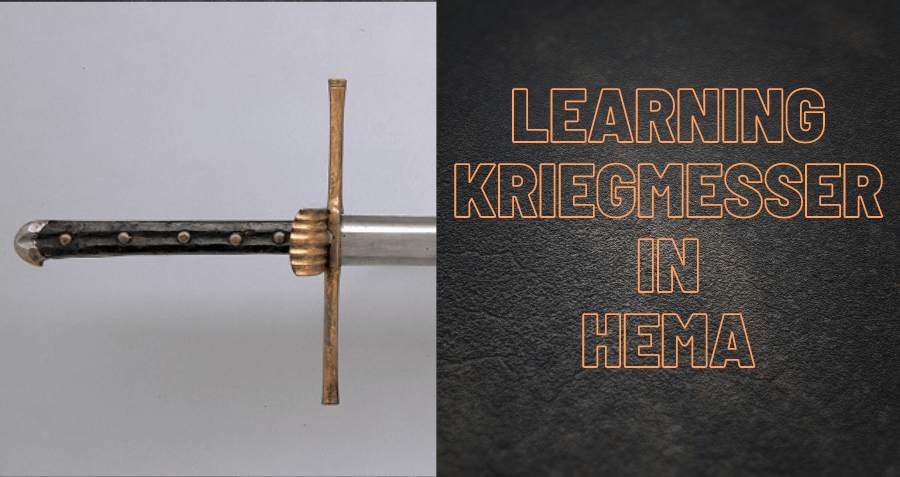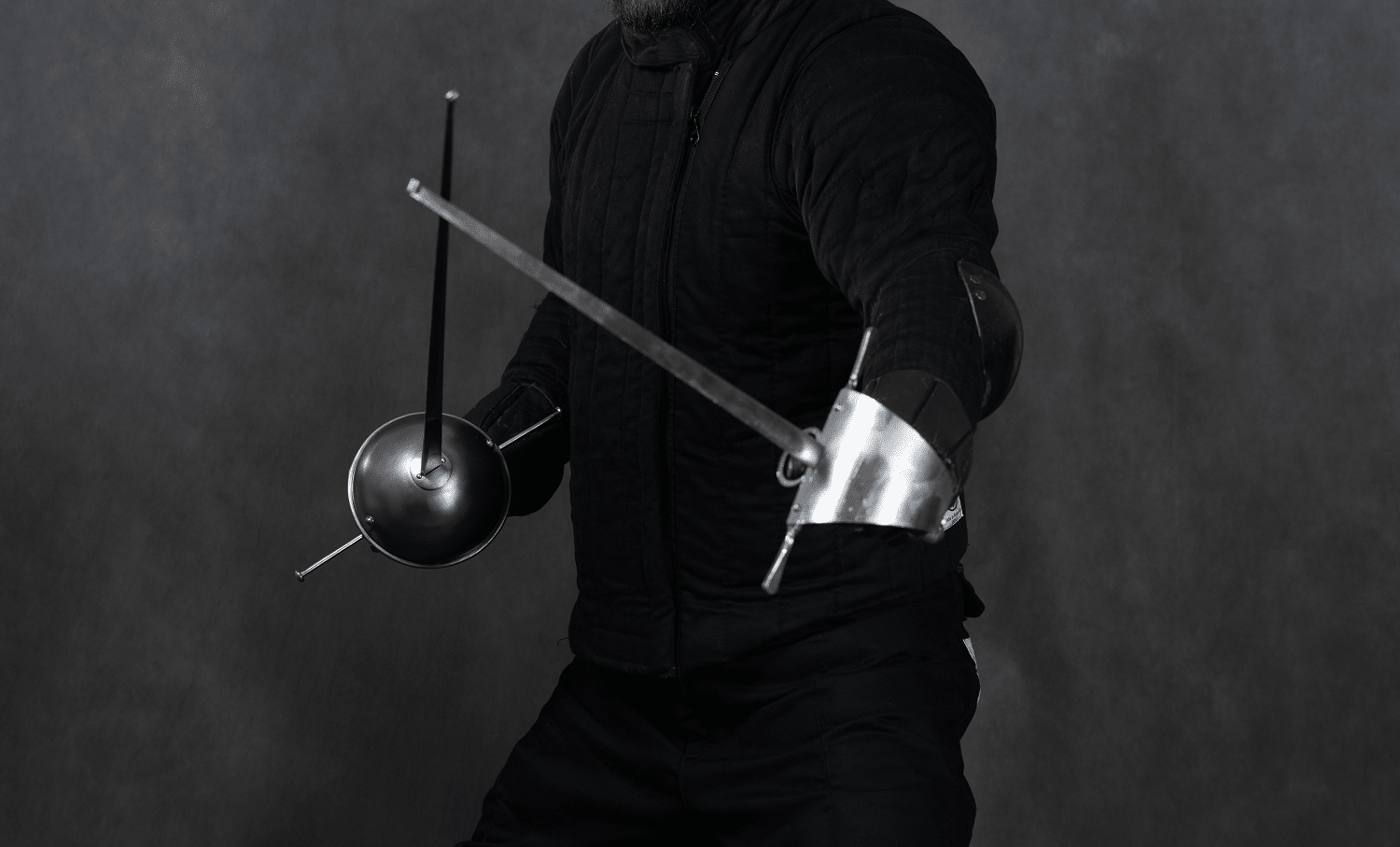Many people are searching online for information about the best HEMA armor for Historical European Martial Arts sword fighting. As HEMA uses heavier training swords than modern Olympic fencing you typically need to use specially made protective equipment designed to be used for historical fencing sparring (free play). When you wear all of this equipment you certainly feel like you are wearing armor, and in a way you really are.
What armor is used in HEMA?
Most practitioners of HEMA do not use steel plate armor, chainmail or other kinds of historical based protective equipment unless they are expressly studying armored combat. The majority of what is studied in HEMA is styles of combat meant for unarmored fighting with swords, so the kinds of gear used as armor in HEMA are designed to protect the fencer from strikes while allowing full range of movement. For this reason the majority of HEMA armor is actually padded puncture resistance jackets, fencing masks with reinforced parts and additional things like forearm and leg protectors.
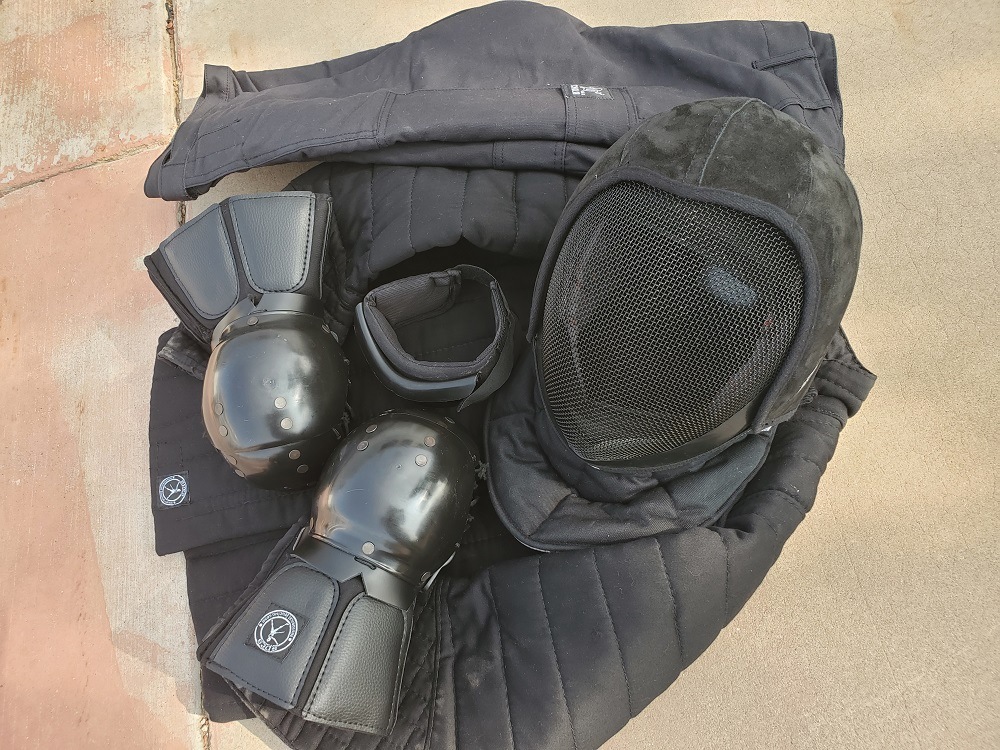
Padded fencing jackets for HEMA
The padded fencing jackets used in HEMA are modeled after gambesons that swordsmen would wear when training during the Renaissance. Despite being modeled on historical designs of gambeson these jackets are usually not called a gambeson within HEMA clubs but it wouldn’t be incorrect to consider them a “HEMA gambeson”. These padded fencing jackets are the main type of armor used in HEMA clubs. They are made from puncture resistance material from companies such as Red Dragon, SPES, Super Fencing and so on. They are made from material that is rated at least 350N for puncture resistance, which is good in case a sword blade snaps that the jagged edges do not pierce someone in the torso.
There are also many mom and pop companies that manufacture equipment in smaller batch runs.
Here is a sample of various padded fencing jackets used as HEMA armor.
Specialty fencing masks / helmets and mask overlay for HEMA
Fencing masks worn for HEMA usage are designed to be able to withstand blows using a federschwert (feder), a kind of long sword training weapon that simulates the handling characteristics of a real sword. As these weapons can generate a great deal of force compared to a foil or epee used in Olympic style fencing, HEMA fighters typically wear masks that have additional protection. Many HEMA students use a Olympic fencing coach mask, which are built to take a lot of punishment but modifications are made such as by adding a padded leather mask overlay to provide additional protection too the crown of the head as well as the back of the head, as these are two areas weak on fencing masks.
-
Uhlmann Fencing Special Leather Mask Overlay
-
Uhlmann Fencing Special 1600N HEMA Fencing Mask
-
Red Dragon Padded Leather Mask Overlay
-
Red Dragon Padded HEMA Mask Hood Overlay
-
PBT Warrior Mask Cover
-
PBT HEMA Warrior Reinforced Mask 1600N
-
Absolute Force Deluxe 350N HEMA Fencing Mask
-
Red Dragon Armoury 350N HEMA Fencing Mask
HEMA armor for protecting the neck
The neck and throat is a very vulnerable area in HEMA sword fighting styles. If fighters do not wear special neck protection then they can easily have a punctured wind pipe from a sword thrust, as the bib on fencing masks is not sufficient to protect against the direct force of thrusts to the neck. For those reason special purpose made gorgets are used as armor for the neck and throat in HEMA.
Here are some examples of neck protection armor such as throat protectors meant for sword fighting,
Sparring gloves and forearm protectors for HEMA
If someone is not wearing hand protection they are very likely to break their fingers while engaging in HEMA sword fighting. So specialty HEMA gloves are used to provide armor for the hands and forearms, too. Many of these gloves are based on designs of historical armor gauntlets used by European knights.
Here is a sampling of the kinds of HEMA gloves used as armor by many students.
HEMA armor to protect the legs
As strikes with a sword trainer can also be performed to the legs it is necessary to have special armor for the thighs, knees and shins. Many fencers use all kinds of equipment for this, ranging from Baseball umpire leg protectors to construction worker padded knee caps. But there is also purpose made protective gear for the legs, too.
Here are some examples of HEMA leg armor,
What HEMA armor is needed as starter gear?
It can be difficult to know exactly what kind of starter equipment you need as a beginner. Many HEMA clubs have loaner gear that can be used by a new student as armor for HEMA sword fighting until they purchase their own kit but it is still good to know ahead of time what options exist and can be used. Here at Historical European Martial Arts Resources we have a guide on what equipment is the best HEMA for beginners. Please read, ‘What HEMA starter kit gear do you need in 2020‘ for an update to date list.
We also have a list of HEMA armor for wearing during tournaments where you expect to receive very powerful strikes from competitors who are giving their best effort to win matches. Please read, ‘Choosing Tournament Gear for HEMA‘ for list of that armor.
What about steel suits of plate armor for HEMA?
As said at the start the vast majority of students in HEMA do not wear steel suits of plate armor unless they are practicing the armored combat sections of historical manuscripts. The vast majority of what is studied are from the unarmored combat sections. This is because purchasing steel armor is very expensive as compared to the modern fencing equipment, and because the combat techniques used for armored combat are very brutal and cannot be practiced safely. Even within environments where suits of plate armor are used, such as Historical Medieval Battle / Armored Medieval Combat / Burhurt events, the full range of historical techniques are not used as it would result in participants being seriously maimed and/or killed. This is why you don’t see techniques like mordhau (“murder strike”) used at these armored combat tournaments.

While the goal of HEMA is to reconstruct historically accurate sword fighting systems from European history the aim is not to create a brutal sport where athletes get maimed and killed. So these kinds of techniques are not allowed at HEMA tournaments but because the full range is not allowed it is difficult to create authentic medieval sword fighting. This is one of the reasons why steel plate armor is not as common at HEMA clubs.
If you are interested in purchasing steel suits of plate armor for usage in HEMA then you should check our lists of North American and European vendors that sell this kind of reproduction armor for historical fencing purposes, as well as our list of custom equipment makers. Suits of steel plate armor must be tailored to the size of the individual who will wear that armor in order to be something that will not restrict movement more than is necessary.
*****
We hope this guide helps you start your journey into learning historical sword fighting.
If you’d like to learn more information about historical fencing practices please check out our Learn HEMA page for a guide to learning about the historical weapon that interests you. You can also find more guides we’ve written about other topics at our Helpful Guides page. You can also join the conversation at our forums.
